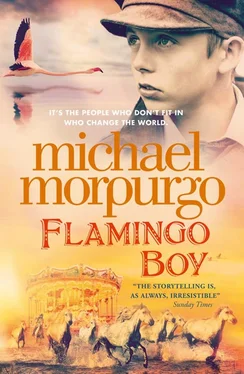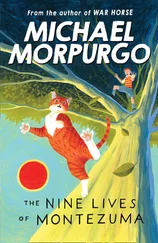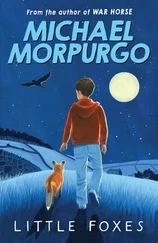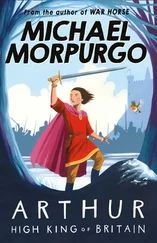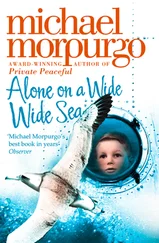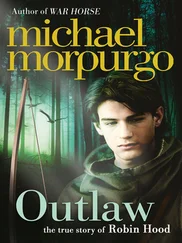Now, that other picture, the boat picture, is very important in the story, because my name is Vincent, Vincent Montague. Only my mother called me Vincent. My friends at school always called me “Monty”, or “Vince”, neither of which I have ever liked. I always liked to be known as Vincent. So, of course, I signed my picture “Vincent”.
My mother had it framed – she liked it that much – and hung it, as she said she would, on the wall above my bed. “There is only one place for this,” I remember her saying, as she stood back, head on one side, and admired it. “It looks perfect up there, doesn’t it? That’s just where it belongs.”
So there it was, my picture of the old traveller, hanging right beside my boat picture, the one that had always been there above my bed, that I had always loved: a painting of four boats on a beach, with the sea and sky behind. Strangely, it was also signed by “Vincent”, which was, of course, I am sure, one of the reasons why I had always loved it so much. But I hadn’t painted that one. Someone else had, someone else called Vincent.
My mother used to joke about it sometimes. “I like that boat picture, Vincent,” she would laugh, “but I prefer yours.” I loved her saying that, of course, but for years I never understood why it was that funny. I just thought she had a rather strange sense of humour, which was true. Anyway, both of these pictures became part of the landscape of my life as I grew up, from a carefree primary-school kid who loved cycling and camping, into a sixth-form student who loved poetry and dreaming – and still camping – and was looking forward impatiently to whatever was coming next.
Gazing out of the window, which I so often did whilst I was supposed to be studying for my exams, down into the tiny walled garden of our suburban house in Watford, I might be absorbed for minutes on end watching a thrush cracking open a snail on the top of the wall. Everything and anything was more interesting to me than getting on with my work, even the washing line that was strung from the drainpipe on the garage across the garden to the weathervane on the shed, with pyjamas and shirts flapping in the wind; or perhaps my mother would be home after work, chatting over the wall to Mrs Donaldson next door, both of them out for a crafty smoke.
I was locked into interminable revision for my exams, dreading the day they would come, but longing to have them done and dusted, longing to have a life. I loved home, loved my mother, but I knew it was a small world I was living in, and I yearned to be gone, to be away from Watford, and off on my travels, to be following the bend in the road, like the old traveller in the story.
CHAPTER 2
My Near-death Experience
In these idling moments,which were many, I kept finding myself turning again and again to look at the two pictures above my bed. I was trying so hard not to become distracted, but I never tried hard enough. Sooner or later, I always found I could no longer resist the temptation. I had to look.
There they were, my small gypsy caravan painting, my best painting ever, according to Miss Weatherby – the story behind it still echoing in my mind – and beside it the other “Vincent” picture. This was a much larger one in a heavy wooden frame, of four boats drawn up on the beach, and four more out at sea beyond – fishing boats by the look of them, but like no other boats I had ever seen. And both pictures painted by “Vincent”. I am sure that my mother must have told me who this other Vincent was at some time or another in all these years; but, if she had, I hadn’t been listening, or I wasn’t interested, or I had long since forgotten.
It wasn’t just the coincidence of the name that I loved. I loved the boat picture above any other paintings I had ever seen. They were graceful-looking boats, flamboyantly coloured, in reds and blues and yellows and greens like the gypsy caravan in my own painting. The empty beach behind them stretched away to the horizon, waves rolling up on to the sand, and a wide, wide sky above was filled with scudding clouds. One of the boats was called Amitié – I could see it quite clearly painted on the prow.
The truth is that if I had not been so busy procrastinating that day, during my revision, I might have never discovered what that word meant at all. It was all part of my dreamy disinclination to get on and revise. I decided to look it up. It was a French word apparently, which I thought it might be – though I had never come across it in my French lessons. It meant friendship or love. So I surmised these boats must very likely have been drawn up on a French beach, but where, on what coast, I had no idea.
At about the same time as I was making this discovery, I happened to come across – in a second-hand bookstall in town – another painting signed by this Vincent, of sunflowers. It was on the cover of a book, and it was a picture I knew at once. The signature was definitely the same, the bright and vibrant colours of the painting instantly recognisable too. I was sure it had to be painted by the same Vincent who had signed my boat picture. I still don’t know what took me so long to get around to making the connection. I have to say I felt rather ignorant and stupid, because this Vincent was, of course, rather famous; in fact, he was amongst the most famous artists the world has ever known. I bought the book for £1.50, took it home and read it from cover to cover.
Vincent van Gogh, a Dutch artist, had signed his pictures “Vincent”, just as I had signed my gypsy caravan painting. I might have recognised his famous sunflower picture, but I had never before paid any attention to the signature, nor really taken on board who it was that had painted these amazing sunflowers. And I certainly did not know he had painted fishing boats as well. But there it was on the wall above my bed, my boat picture, and painted by the famous Vincent van Gogh.
He had spent some time in the south of France, I discovered, towards the end of his life. Whilst living there, he had painted hundreds of pictures, some landscapes, some of the people who lived and worked there. A few of them – including mine – he had painted down by the sea, just a few miles from where he was living, in a town called Arles. It was in his room in Arles, in a state of deep depression, that he had cut off his own ear. Mental illness had forced him to spend time in a nearby hospital, but he never really recovered. In the end, he had been driven to suicide.
The more I read about him, the more I wanted to find out about him, to see as many of his pictures as I could, to go where he had gone, to stand on the beach where he had painted his boats. Such diversion and reveries, of course, did not help me to focus on revision for my Geography and English Literature exams, and even less on my Biology, which I especially loathed.
But it wasn’t just my belated discovery of who this Vincent was that made me want to go where he had gone, to find the beach where he had painted my picture of the fishing boats on the sand. There were other pictures from the book I particularly liked: one of a little bridge over a canal, and the one of a café bathed in yellow light in a cobbled street under a starry evening sky. I wanted to go to all these places, be where he had been. It wasn’t because he was famous that made me want to go, and it wasn’t just because we happened to share the same name either. It was because that boat picture of his above my bed very nearly killed me.
I was in my bedroom, at my desk by the window, pretending to be deep into my revision. Moments before, I had been lying on my bed, trying to summon up the willpower to get on with my work. I was only at my desk at all because I had heard my mother coming up the stairs and did not want her to catch me lazing about again. So there I was, hunched over my Biology textbook, looking as studious as I could, and waiting for the inevitable knock on my door. That was when it happened, my near-death experience. No crashing, no splintering of glass. The boat painting – I remind you, it was a large and very heavy picture – simply fell off the wall and landed with a great thud on my pillow, exactly where my head had been less than a minute before.
Читать дальше
